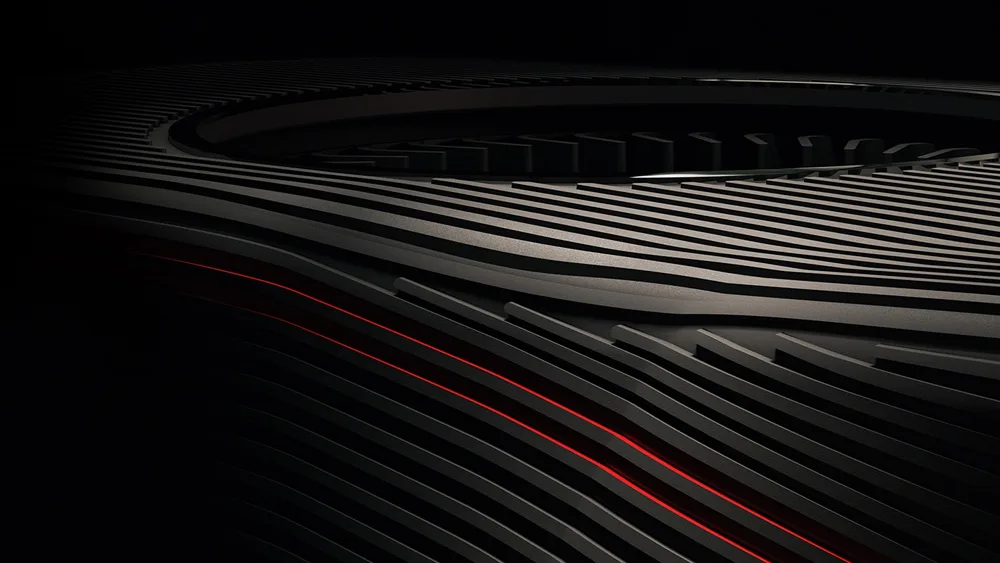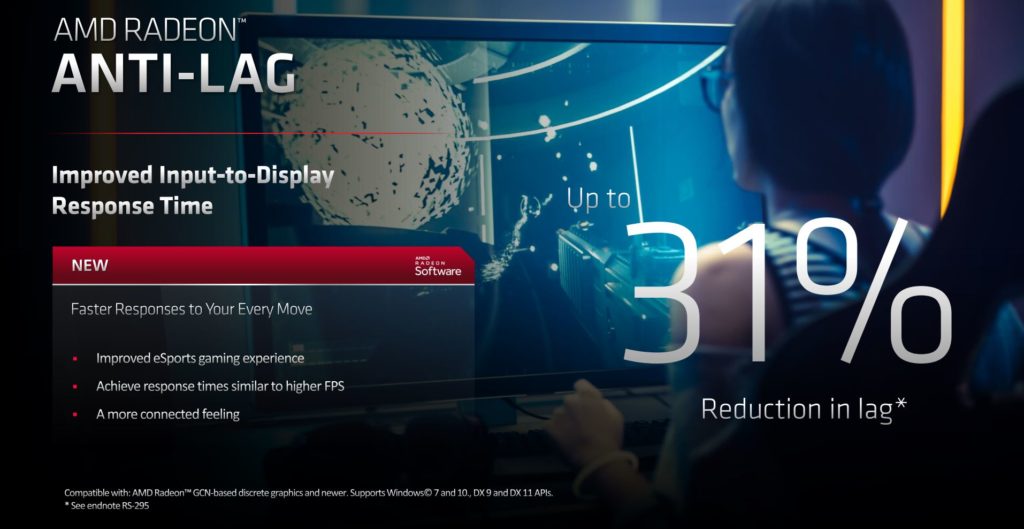
AMD introduced two new technologies for Radeon GPUs during its Next Horizon event at E3, Radeon Image Sharpening (RIS) and Radeon Anti-Lag. Both are somewhat self-explanatory.

RIS is described as “intelligent sharpening technology” that improves detail with a combination of contrast-adaptive sharpening and GPU upscaling. AMD says it has minimal impact on performance.

Radeon Anti-Lag improves input-to-display response time, reducing lag by as much as 31%.
NVIDIA doesn’t sound impressed with either. Director of Product Management Justin Walker points out that NVIDIA Freestyle has already allowed gamers to sharpen their visuals since the feature’s debut in 2018. It also lets you tweak other effects.
…they announced a bunch of technologies, Radeon Sharpening, which is fine. But you know, if you want to go compare that we’ve got, we’ve had sharpening in NVIDIA Freestyle for a very long time. NVIDIA Freestyle has got a whole suite of filters, one of which is sharpening. But there’s also things like HDR toning, and color vibrance, all that stuff. So if you want to play around with sharpening, just keep in mind, you don’t have to wait.
In regard to Anti-Lag, Walker presumes it’s similar to the maximum pre-rendered frames option available in the NVIDIA Control Panel.
I think it’s something similar to what we call maximum pre-rendered frames, which is actually something we’ve had in our control panel for some time.
Basically what happens is during the graphics pipeline, the CPU will start processing frames and send them into the pipeline. Now, if you allow it to buffer frames, meaning to see if you just go as fast as you can even if the GPU is not ready, it may send a few frames in the pipeline. You do that to get the max performance, then you can guarantee the GPU is never waiting for the CPU. Because if that happens, you may have to wait a little for the CPU to process before it needs a GPU. So a lot of times, you’ll buffer up a few frames in there, which is great if you’re worried about just straight up performance. However, if you’re sensitive to latency, which if you’re an eSports fan you are, then any mouse movement you make will not affect frames already in that buffer. So if I make a movement, it’ll go into the next frame. But that gets in line behind like a full frame already sitting there in the buffer. And so that can introduce, you know, depending on your frame rate, maybe 20 milliseconds of lag. Now, you can go to our control panel and set it yourself. And I think this is what they are doing, setting the maximum pre-rendered frames to one. And that won’t do any buffering, which may affect your performance a little bit, but it’ll take your latency away.
